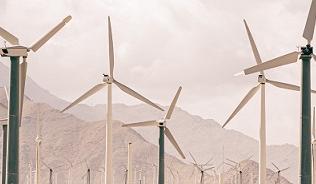In 2020, we became signatories to the Pledge to Net Zero and UNFCCC's Carbon Neutral Now campaigns. In line with our commitments to these initiatives, we must:
- Set and deliver a greenhouse gas reduction target in line with a well below 2°C climate change scenario
- Measure and publicly report our greenhouse gas emissions for an agreed-upon period of time
- Publish at least one piece of research/thought-leadership each year on practical steps to delivering an economy in line with climate science and in support of net zero carbon
- Offset remaining emissions with UN Certified Emission Reductions (CERs)
We calculated our baseline carbon emissions using data available between April 2019 and March 2020. During this period, we emitted 8.72 tCO2e. We have calculated our carbon emissions for 2021 and broken these down into the three scopes of emissions:
| 2019 baseline GHG emissions (tCO2e) |
2020 GHG emissions (tCO2e) | 2021 GHG emissions (tCO2e) | 2025 target GHG emissions (tCO2e) |
GHG target reduction from base | |
| Scope 1 | 0 | 0 | 0 | 0 | 0% |
| Scope 2 | 0 | 0 | 0 | 0 | 0% |
| (location-based) | -1.58 | -0.87 | -0.82 | -1.34 | -15% |
| Scope 3 | 7.13 | 0.88 | 1.04 | 6.06 | 15% |
| Total | 8.71 | 1.75 | 1.87 | 7.4 | 15% |
This year we are publishing the results this year from between April 2021 to February 2021 so as to fulfil our reporting requirements. Next years' data will reflect this adjustment, and run from February 2022 - January 2023.
Our carbon emissions for this year remain significantly reduced compared to our baseline data (for April 2019 to March 2020), but have risen since the end of working restrictions this year. This is due to the fact that our staff have mainly been working remotely for the duration of this 12 month data collection period, reducing our impacts from commuting; most meetings (internal and external) have continued to be held remotely, reducing our impacts from business travel purposes; and our event programme has been remained almost entirely online, reducing our impacts from venue hire and physical events. It is also worth noting our Scope 2 emissions remain at 0 tCO2e as we have a 100% renewable energy tariff, with a location-based carbon emissions indicator that accounts for emissions as if we were taking them directly from the grid.
Relative to the baseline data, we are able to monitor refills and leaks to our office air conditioning units (Scope 1), however, there have been no refills or leaks in this reporting year. We have been able to continue to include data for this year that includes capital goods purchases such as ink cartridges, cleaning supplies and office supplies (Scope 3). The data also reflect our increased membership each year, with more individuals receiving physical copies of our journal throughout the year. We'll be looking to reduce our environmental impact of the journal by incorporating more online content over the next three years. It is worth noting that we have not included data regarding changes to energy and water usage in staff homes during work hours (impacting Scope 2 and 3).
With that in mind, we will continue to adapt our carbon emission data collection accordingly according to our future working practices. We continue to take learnings from COVID-19 IES operations and build these into post-COVID-19 practices. This will allow us to balance the environmental benefits we see in the reduction of our carbon emissions from factors such as commuting and business travel, with pragmatic solutions to support ongoing needs of our staff to work hybridly.
In line with point 3 of our commitments under the Pledge to Net Zero and UNFCCC's Carbon Neutral Now campaigns, please see our Analysis pages for regular thought-leadership content.
Regarding point 4, to date, we are required to purchase a total of 12.33 tonnes of offset carbon credits and we are considering suitability from the Climate Neutral Now offset projects. We will purchase these in bulk in 2026 to cover the duration of our monitoring (2019 to 2025).



